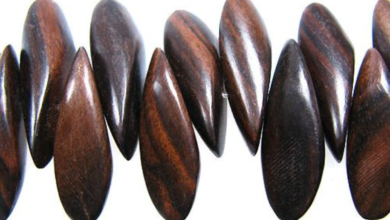Mehendidesign: The Art, Culture, and Modern Magic of Henna

Introduction: What Is Mehendidesign Really About?
Mehendidesign is more than just a temporary tattoo. It is a form of art deeply rooted in tradition, culture, and personal expression. From Indian weddings to modern-day fashion statements, mehendi (or henna) has transformed into a global trend. But what really lies behind those intricate patterns? This article dives deep into the world of mehendidesign, exploring its history, styles, techniques, cultural relevance, and how it continues to evolve today.
Henna has long been used to beautify the skin, especially in South Asian, Middle Eastern, and African cultures. It involves using a paste made from the powdered leaves of the henna plant, Lawsonia inermis, which temporarily stains the skin in varying shades of orange to deep brown. But the design part—that’s where the real magic happens. Whether you’re getting ready for a wedding or just want to try something artistic, mehendi designs allow individuals to express themselves in a unique, skin-safe medium.
Over time, mehendidesign has grown from being a ritualistic application to a highly stylized art form. Artists now blend tradition with innovation, adding sparkles, glitters, and even colored henna to their designs. Social media platforms have fueled this art form even further, creating a global community of mehendi lovers who continue to innovate and inspire. Let’s break down what makes mehendidesign so special.
The Rich History and Cultural Significance of Mehendi
The use of henna dates back thousands of years. Archaeologists have found evidence of henna use in ancient Egyptian mummies, where it was used to dye hair and fingernails. However, the ritualistic and decorative use of mehendi as we know it today largely comes from South Asia and the Middle East.
In Indian culture, mehendi plays a critical role in weddings and festivals. The Mehendi ceremony is a major pre-wedding ritual for Indian brides. It’s not just about beauty—there’s symbolism involved. The darker the henna stain, the deeper the love between the bride and groom, or so the tradition goes. Additionally, mehendi is believed to bring good luck, happiness, and protection from evil spirits.
In Islamic cultures, mehendi is applied during Eid celebrations, symbolizing joy and festivity. African cultures, especially among Berber women, also have their own unique mehendi traditions, using geometric shapes and bold patterns to convey identity and spirituality. What’s fascinating is how a single plant and practice have such diverse cultural footprints across the world.
Traditional Styles of Mehendidesign
Different cultures and regions have influenced distinct styles of mehendi. Each style has unique elements that reflect the artistic and cultural sensibilities of its origin.
Indian Mehendi
Indian mehendidesigns are known for their intricate patterns and motifs. Think paisleys, peacocks, floral vines, and images of gods and goddesses. Indian bridal mehendi often covers the entire hand, wrist, and feet, leaving little skin exposed. The detailing is so dense that it can take several hours to complete a single design.
A popular motif in Indian mehendi is the bride and groom’s image. Some brides also request initials or names of their partners hidden within the patterns for a fun post-wedding game. The use of fine lines and shading techniques makes Indian mehendi stand out in its complexity and beauty.
Arabic Mehendi
Arabic mehendidesigns, on the other hand, are bold and flowy. They are typically less dense than Indian styles and use larger floral and leafy patterns. These designs often leave spaces between motifs, giving them a more contemporary look. Arabic mehendi is popular among people who prefer simpler and quicker applications.
This style is often used for casual occasions and suits people who enjoy minimalistic yet elegant body art. It’s also highly favored for Eid celebrations in the Gulf countries.
Moroccan Mehendi
Moroccan mehendi is distinctive because of its geometric and symmetrical patterns. Influenced by Berber art, these designs often feature squares, diamonds, zigzags, and dots. The patterns are usually more symbolic than aesthetic, often representing protection, fertility, and prosperity.
Unlike the floral and vine-like structures in Indian and Arabic mehendi, Moroccan mehendi is more tribal and abstract. It is often used not just for decoration but also for ritualistic and spiritual purposes.
The Modern Twist: Fusion Mehendidesign
As cultures interact and the world becomes more interconnected, a new wave of mehendidesign has emerged: fusion. This style borrows elements from traditional Indian, Arabic, and Moroccan patterns and blends them into new, experimental designs.
Fusion mehendi is perfect for modern brides who want something unique. Artists might mix geometric Moroccan lines with Indian florals or create new motifs like mandalas, animals, and even pop culture references. The use of glitter, stones, and even white or colored henna adds to the contemporary aesthetic.
Social media platforms like Instagram and Pinterest have played a huge role in this evolution. Today’s mehendi artists are influencers in their own right, constantly pushing boundaries and setting new trends. From bridal bloggers to TikTok tutorials, the modern mehendidesign scene is vibrant and ever-changing.
How to Apply Mehendi Like a Pro
If you’re new to mehendi, the process might seem a little intimidating. But with the right tools and some patience, you can create beautiful designs right at home.
Start with a good quality henna cone or powder. The fresher, the better—older henna loses its staining power. If you’re mixing your own paste, let it sit for at least 6-8 hours to release the dye. For beginners, it’s best to start with pre-filled cones as they are easier to handle.
Before applying, clean your skin thoroughly to remove any oils or lotions. Begin with simple shapes like flowers or vines and gradually move to more complex patterns. Steady hands and consistent pressure on the cone are key to clean lines. Let the design dry for at least 30 minutes before applying a sugar-lemon mixture to enhance color. Keep the paste on for 4-6 hours or overnight for the best stain.
Mehendi Care Tips for Long-Lasting Color
You can spend hours on a beautiful mehendi design, but if you don’t care for it properly, the color won’t last. Here are a few expert tips to keep your stain looking rich and vibrant:
First, avoid water for at least 12 hours after application. Water can prevent the dye from oxidizing properly. Once you remove the dried paste, don’t wash your hands. Instead, scrape it off gently and apply some natural oils like coconut or mustard oil.
Heat helps darken the stain, so warming your hands near a heat source (not too close!) or steaming them can help. Avoid exfoliating the skin too much, as that will fade the stain faster. With proper care, mehendi can last up to two weeks.
Mehendi and Wellness: More Than Just Looks
Believe it or not, mehendi is not just about aesthetics. In Ayurvedic medicine, henna is known for its cooling properties. Applying mehendi can help relieve stress, reduce body heat, and even treat skin irritations.
Brides in India often get mehendi applied to their hands and feet a day before the wedding not just for tradition, but because it helps them relax. The fragrance of henna, combined with essential oils like eucalyptus or clove, creates a calming effect. It’s like a spa treatment hidden within a cultural ritual.
Mehendi is also used for medicinal purposes in traditional practices. It can help treat dandruff when applied to the scalp, and the leaves are sometimes used in poultices to heal wounds or reduce inflammation.
Kids and Mehendi: A Growing Trend
Kids today are no strangers to mehendidesign, thanks to festivals, school functions, and even birthday parties featuring mehendi stalls. Parents often look for safe, natural henna products that are chemical-free and suitable for children’s delicate skin.
There are now special mehendi cones designed for kids, often in fun colors like glittery pinks or greens. While traditionalists may scoff at the idea of colored mehendi, it has opened up a world of creativity for the younger generation.
Simple designs like smiley faces, stars, or cartoon characters are hugely popular among kids. Mehendi is also a great way to teach children about different cultures and traditions in an engaging, hands-on manner.
Bridal Mehendi: The Showstopper Art
When it comes to weddings, mehendi takes center stage. Bridal mehendi is not just an accessory; it is often a form of storytelling. Artists sometimes incorporate elements like the couple’s love story, wedding dates, or symbolic elements like doli (bridal palanquin), kalash (sacred pot), or musical instruments.
The process can take hours, even a full day, depending on the complexity. Brides usually sit surrounded by friends, snacks, and music, making it a fun pre-wedding ritual. The entire ceremony becomes a memory-making event.
Some brides also opt for mehendi parties where friends and family join in the fun, getting simpler designs done while the bride is adorned with the more elaborate ones. It’s more than an art—it’s a bonding experience.
The Role of Mehendi in Festivals and Celebrations
Beyond weddings, mehendi is used in many cultural and religious festivals. During Diwali, Karva Chauth, Raksha Bandhan, Eid, and Teej, women adorn their hands with fresh mehendi. It symbolizes joy, prosperity, and divine blessings.
Applying mehendi becomes a family affair. Women gather to exchange stories, sing songs, and celebrate their traditions. The act of putting on mehendi becomes a ritual that deepens cultural identity.
In modern times, festivals often come with mehendi booths at fairs and community centers. These events keep traditions alive while adapting to new settings and audiences. From temples to shopping malls, mehendi has a place everywhere.
Conclusion: The Living Legacy of Mehendidesign
Mehendidesign is not just about patterns on skin. It is a living, breathing legacy of culture, creativity, and community. Whether you prefer the traditional motifs or modern, experimental designs, mehendi offers something for everyone.
Its popularity continues to grow, not just because of its beauty, but because of what it represents: celebration, self-expression, and connection. From ancient rituals to Instagram reels, mehendidesign has come a long way—and its journey is far from over.
So the next time you see someone with intricate henna patterns on their hands, remember: it’s not just a design. It’s art. It’s history. It’s identity.
FAQs About Mehendidesign
1. How long does mehendi last on the skin? With proper care, mehendi typically lasts between 1 to 2 weeks. Factors like skin type, application time, and post-care routines can affect the longevity.
2. Is mehendi safe for all skin types? Natural henna is generally safe, but black henna can contain chemicals like PPD which may cause allergic reactions. Always patch-test before full application.
3. Can I make mehendi at home? Yes! Mix henna powder with lemon juice, sugar, and essential oils. Let it rest for 6-8 hours before use for best results.
4. What is the best time to apply mehendi before a function? Apply mehendi at least 24-48 hours before your event to allow the stain to darken to its fullest shade.
5. Are there any modern trends in mehendidesign? Yes, fusion styles, white and glitter mehendi, and minimalist tattoos are very trendy. Social media platforms often showcase fresh, innovative designs.





